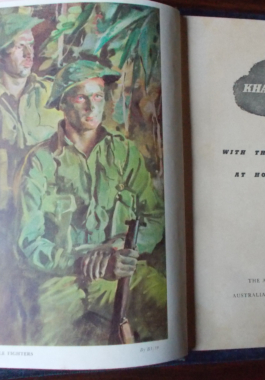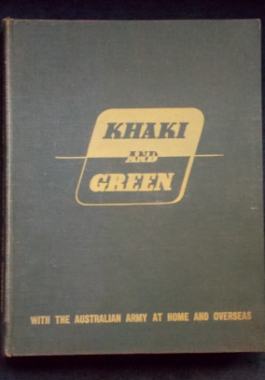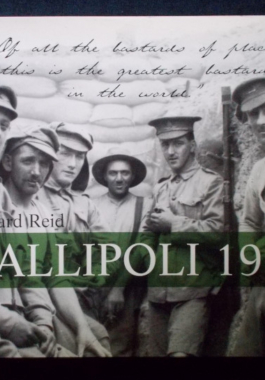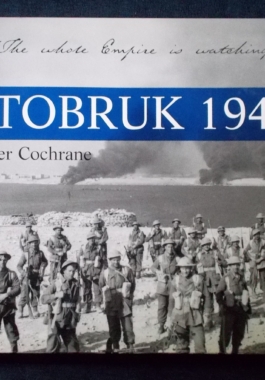-

 Blitzkrieg: Traces the origins of the war starting with the Armistice at Compiègne in 1919, covering the rise of totalitarianism in Europe, the first terrible months of the Blitzkrieg, the imperialistic aggression of Japan in the Far East, the period of Allied appeasement, the evacuation of Dunkirk and the fall of France. Siege: Begins with the dogged and courageous stand of the British against the onslaught of the Nazi war machine, the war in the North Atlantic and Mediterranean, the invasion of the Balkans and Greece, the harsh and brutal war in the North African desert, the suicidal German attack on Russia, the cruelty of the winter war and the attack on Pearl Harbour. Counterattack: The initial period of the Axis reversals and the first steps on the Allied road to victory; the three great turning points of the war ( Stalingrad, Midway and El Alamein) Rome has fallen; the Nazis are reeling under the Russian counter-offensive and the first of the costly, bloody Pacific campaigns. Victory: The last stages of the war in both the European and Pacific theatres; the Allied landing on the beaches of Normandy, the battle of France, the Red Army offensive, the Yalta conference and the capitulation of the Third Reich, concluding with the bitter Pacific Island campaigns, MacArthur's retrurn to the Philippines, the dropping of the atomic bomb and Japan's surrender. Each volume contains rare photographs; over four volumes, 500 photographs and 100,000 words.
Blitzkrieg: Traces the origins of the war starting with the Armistice at Compiègne in 1919, covering the rise of totalitarianism in Europe, the first terrible months of the Blitzkrieg, the imperialistic aggression of Japan in the Far East, the period of Allied appeasement, the evacuation of Dunkirk and the fall of France. Siege: Begins with the dogged and courageous stand of the British against the onslaught of the Nazi war machine, the war in the North Atlantic and Mediterranean, the invasion of the Balkans and Greece, the harsh and brutal war in the North African desert, the suicidal German attack on Russia, the cruelty of the winter war and the attack on Pearl Harbour. Counterattack: The initial period of the Axis reversals and the first steps on the Allied road to victory; the three great turning points of the war ( Stalingrad, Midway and El Alamein) Rome has fallen; the Nazis are reeling under the Russian counter-offensive and the first of the costly, bloody Pacific campaigns. Victory: The last stages of the war in both the European and Pacific theatres; the Allied landing on the beaches of Normandy, the battle of France, the Red Army offensive, the Yalta conference and the capitulation of the Third Reich, concluding with the bitter Pacific Island campaigns, MacArthur's retrurn to the Philippines, the dropping of the atomic bomb and Japan's surrender. Each volume contains rare photographs; over four volumes, 500 photographs and 100,000 words. -
 A detailed history of the World War II American B-29 Enola Gay, its crew, and the controversial mission to drop the atomic bomb on Hiroshima, Japan. Painstakingly researched, the story behind the decision to send the Enola Gay to bomb Hiroshima is told through firsthand sources. From diplomatic moves behind the scenes to Japanese actions and the US Army Air Force’s call to action, no detail is left untold. Touching on the early days of the Manhattan Project and the first inkling of an atomic bomb, investigative journalist Gordon Thomas and his writing partner Max Morgan-Witts, take WWII enthusiasts through the training of the crew of the Enola Gay and the challenges faced by pilot Paul Tibbets. Illustrated with black and photographs.
A detailed history of the World War II American B-29 Enola Gay, its crew, and the controversial mission to drop the atomic bomb on Hiroshima, Japan. Painstakingly researched, the story behind the decision to send the Enola Gay to bomb Hiroshima is told through firsthand sources. From diplomatic moves behind the scenes to Japanese actions and the US Army Air Force’s call to action, no detail is left untold. Touching on the early days of the Manhattan Project and the first inkling of an atomic bomb, investigative journalist Gordon Thomas and his writing partner Max Morgan-Witts, take WWII enthusiasts through the training of the crew of the Enola Gay and the challenges faced by pilot Paul Tibbets. Illustrated with black and photographs. -


With the Australian Army at Home and Overseas. Published for the Australian Military Forces by the Australian War Memorial, Canberra, 1943. With news and information - literally - as it happened from the Middle East and the South West Pacific. Chapters and writings include: Alamein Christmas Shops; Luck and Gus; I Saw a Panzer Attack; The Log Which Wasn't; Moon Madness; Survival of the Fairest; No Mates in the Army and much more, all written by Australia's Own. With stories, yarns, cartoons, poems, fabulous colour plates, black and white illustrations and photographs. Real war history.
-

The author has written the full length story of the Malayan campaign of World War II from the 'sharp end' of the fighting and as a prisoner-of-war, one of thousands who suffered for three years. He takes the reader through bewildering, disordered days and nights of fighting to humiliation at the hands of the Japanese, versed in all the arts of abasing and breaking prisoners by starvation and neglect. The illustrations by fellow prisoner Ronald Searle (St. Trinians, Down With Skool,Whizz For Atomms, How To Be Top, etc.) are poignant, forceful and make reality even more real. This really is war and imprisonment as it happened.
-
 Most dramas end in anti-climax, but not in Nazi Germany. Everything about its demise was tragic crescendo. This is a dramatic countdown of the final months of World War II in Europe, bringing to life the waning power and the ultimate submission of the Third Reich. To reconstruct the tumultuous hundred days between Yalta and the fall of Berlin, John Toland traveled more than 100,000 miles in twenty-one countries and interviewed more than six hundred people - from Hitler’s personal chauffeur to Generals von Manteuffel, Wenck, and Heinrici; from underground leaders to diplomats; from top Allied field commanders to brave young GIs. When it was first published, The Last 100 Days made history, revealing after-action reports, staff journals, and top-secret messages and personal documents previously unavailable to historians. Illustrated with black and white archival photographs.
Most dramas end in anti-climax, but not in Nazi Germany. Everything about its demise was tragic crescendo. This is a dramatic countdown of the final months of World War II in Europe, bringing to life the waning power and the ultimate submission of the Third Reich. To reconstruct the tumultuous hundred days between Yalta and the fall of Berlin, John Toland traveled more than 100,000 miles in twenty-one countries and interviewed more than six hundred people - from Hitler’s personal chauffeur to Generals von Manteuffel, Wenck, and Heinrici; from underground leaders to diplomats; from top Allied field commanders to brave young GIs. When it was first published, The Last 100 Days made history, revealing after-action reports, staff journals, and top-secret messages and personal documents previously unavailable to historians. Illustrated with black and white archival photographs. -
 Illustrated with over 1300 photographs, some never previously published, this military journey begins with the build up to war and the invasion of Poland to ultimate victory over Japan. Immensely readable, it brings the events and the people of those turbulent times into sharp focus for those who lived through the conflict as well as those born during the fifty years that have elapsed since the war's end.
Illustrated with over 1300 photographs, some never previously published, this military journey begins with the build up to war and the invasion of Poland to ultimate victory over Japan. Immensely readable, it brings the events and the people of those turbulent times into sharp focus for those who lived through the conflict as well as those born during the fifty years that have elapsed since the war's end. -

Gallipoli 1915: Richard Reid
$15.00A new look at the old legend of Anzac - an account of how ordinary blokes from many different countries coped in extraordinary circumstances not only in battle but back in the trenches. These men, whose fingers were too frozen to pull the trigger, buried their best mates, slept in holes in the ground and struggled with lice infested clothes. This book presents a remarkable and absorbing series of photographs from Australia's major archival collections, many previously unseen. These images often taken by the soldiers themselves, combined with illustrations created for the newspapers, were the images responsible for creating the public memory of Gallipoli back in Australia. The commentary of historian, Dr Richard Reid of the Department of Veterans' Affairs, together with moving extracts from soldiers letters and diaries, along with the official dispatches of war correspondents present at Gallipoli, paint an unforgettable record of the sacrifices, courage and determination embodied in the Anzac legend. -

Tobruk 1941: Peter Cochrane
$15.00No surrender...no retreat. When the 9th Division of the AIF withdrew into the desert fortress town of Tobruk in April 1941, a siege began that would make its mark on the course of World War II and the popular memory of a nation. The siege was intended to last no longer than two months, but ultimately extended to eight. Under the command of Morshead, the Allied troops employed an aggressive, daring defence that put a sizeable dent ion Rommel's aura of invincibility. The defiant Aussie diggers distinguished themselves through their determination and unquenchable cheerful spirit. The success of the Rats of Tobruk inspired hope for the possibility of effective resistance in the midst of the darkest days of the war. Illustrated with archival black and white photographs.



